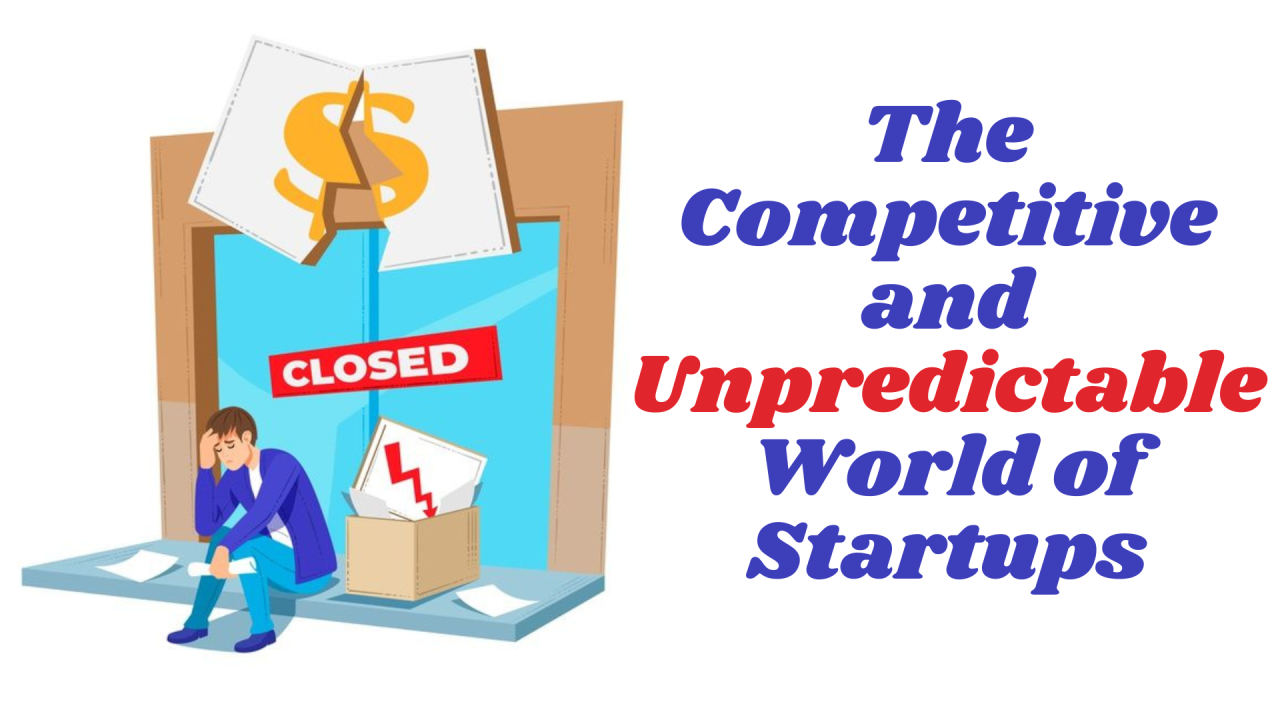The High Failure Rate Of Food Startups: What Founders Can Do Differently

Table of Contents
Understanding the High Failure Rate of Food Startups
The high failure rate of food businesses is a complex issue, but several key factors consistently contribute to their downfall. Understanding these challenges is the first step towards building a resilient and successful food startup.
Insufficient Market Research and Validation
Many food startups fail because they lack a deep understanding of their target market. This often translates to:
- Lack of understanding target audience needs and preferences: Launching a product without knowing who will buy it is a recipe for disaster. Are you targeting families, young professionals, or a niche demographic? What are their dietary restrictions, preferences, and price points?
- Failure to test product-market fit before significant investment: Don't invest heavily in production and marketing before validating your product with potential customers. Start with small-scale testing, gather feedback, and iterate based on real-world data. Minimum Viable Product (MVP) testing is crucial here.
- Ignoring competitor analysis and market saturation: Thoroughly research your competitors. What are their strengths and weaknesses? What is your unique selling proposition (USP)? Is the market already saturated with similar offerings?
- Example: Launching a gourmet vegan burger joint in a small town with limited vegetarian population is a classic example of poor market research. The demand simply might not be there to support such a venture.
Poor Financial Management and Planning
Even the most delicious food won't sell if the business isn't financially sound. Common financial missteps include:
- Underestimating startup costs and ongoing operational expenses: Food businesses have many hidden costs, from inventory management to licensing and permits. Create a detailed budget that accounts for all potential expenses.
- Lack of a robust financial model and cash flow projections: You need a clear understanding of your revenue streams, expenses, and profitability. Regularly review your financial statements and adjust your strategy as needed.
- Ineffective pricing strategies leading to insufficient profit margins: Pricing your products too low can lead to losses, while pricing them too high can deter customers. Find the sweet spot that balances profitability and market competitiveness.
- Example: Not accounting for seasonal ingredient price fluctuations can severely impact your profit margins, leading to financial instability.
Inadequate Operational Planning and Scalability
Efficient operations are crucial for food startups. Many fail because of:
- Ignoring supply chain management and logistics: Reliable sourcing of high-quality ingredients is paramount. Develop strong relationships with suppliers and establish efficient inventory management systems.
- Lack of efficient production processes and workflow: Streamline your operations to maximize efficiency and minimize waste. This includes everything from food preparation to order fulfillment.
- Failure to plan for growth and expansion: Scalability is key for long-term success. Ensure your business model and operations can handle increased demand.
- Example: Relying solely on one unreliable supplier for key ingredients leaves your business vulnerable to disruptions in the supply chain.
Strategies for Increasing Your Food Startup's Chances of Success
While the food startup failure rate is high, success is achievable with careful planning and execution.
Conduct Thorough Market Research
Before you even think about recipes, conduct exhaustive market research:
- Define your ideal customer profile (ICP): Who is your target customer? What are their demographics, psychographics, and buying habits?
- Validate your product idea through surveys, focus groups, and MVP testing: Get feedback from your target audience before committing significant resources.
- Analyze your competition and identify your unique selling proposition (USP): What makes your food startup stand out from the crowd?
Develop a Comprehensive Business Plan
A well-structured business plan is your roadmap to success:
- Create detailed financial projections, including startup costs, operating expenses, and revenue forecasts: Be realistic and conservative in your estimations.
- Secure adequate funding through loans, investors, or bootstrapping: Explore various funding options and choose the best fit for your business.
- Establish clear financial goals and key performance indicators (KPIs): Track your progress and make adjustments as needed.
Build a Strong Brand and Marketing Strategy
Your brand is your identity; your marketing is how you connect with customers:
- Develop a compelling brand story and visual identity: Create a memorable brand that resonates with your target audience.
- Implement a multi-channel marketing plan encompassing social media, local advertising, and public relations: Reach your customers where they are.
- Engage with your target audience and build a loyal customer base: Excellent customer service is essential for long-term success.
Prioritize Operational Efficiency and Scalability
Efficiency and scalability are critical for growth:
- Establish strong relationships with reliable suppliers: Ensure a consistent supply of high-quality ingredients.
- Implement efficient production processes and inventory management systems: Minimize waste and maximize productivity.
- Design your business model for scalability from the outset: Think about how you will grow your business without compromising quality or efficiency.
Conclusion
The high failure rate of food startups is a significant challenge, but it's not insurmountable. By focusing on thorough market research, robust financial planning, a strong brand, and efficient operations, food entrepreneurs can significantly increase their chances of success. Remember, understanding the common pitfalls and proactively addressing them is key to building a thriving and sustainable food business. Don't let the statistics deter you – with careful planning and execution, you can beat the odds and create a successful food startup. Start planning your food startup strategy today and avoid common pitfalls associated with the high failure rate of food startups.

Featured Posts
-
 16 Jarige Venlonaar Overvalt Schoolgenoten Met Vuurwapen
May 29, 2025
16 Jarige Venlonaar Overvalt Schoolgenoten Met Vuurwapen
May 29, 2025 -
 La Vaccinazione Covid 19 Protegge Dal Long Covid I Dati Ecdc
May 29, 2025
La Vaccinazione Covid 19 Protegge Dal Long Covid I Dati Ecdc
May 29, 2025 -
 Limited Time Offer Nike Sneakers From 39 At Revolve
May 29, 2025
Limited Time Offer Nike Sneakers From 39 At Revolve
May 29, 2025 -
 State To Conclude Case Against Joshlin Smith Soon
May 29, 2025
State To Conclude Case Against Joshlin Smith Soon
May 29, 2025 -
 A Malcolm In The Middle Revival News Rumors And Hopes
May 29, 2025
A Malcolm In The Middle Revival News Rumors And Hopes
May 29, 2025
